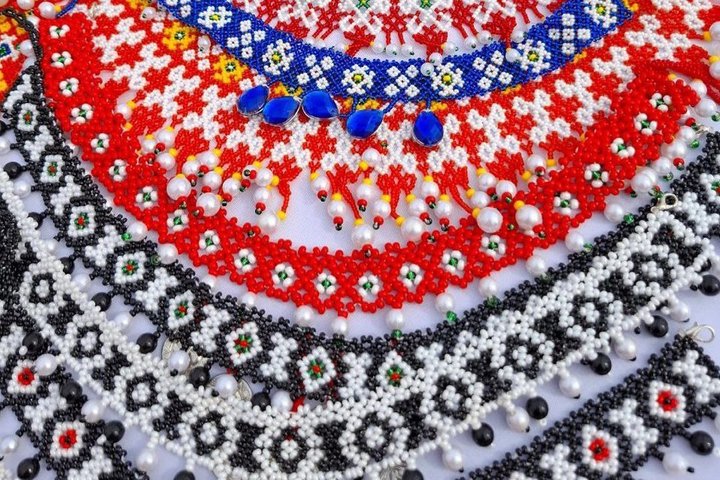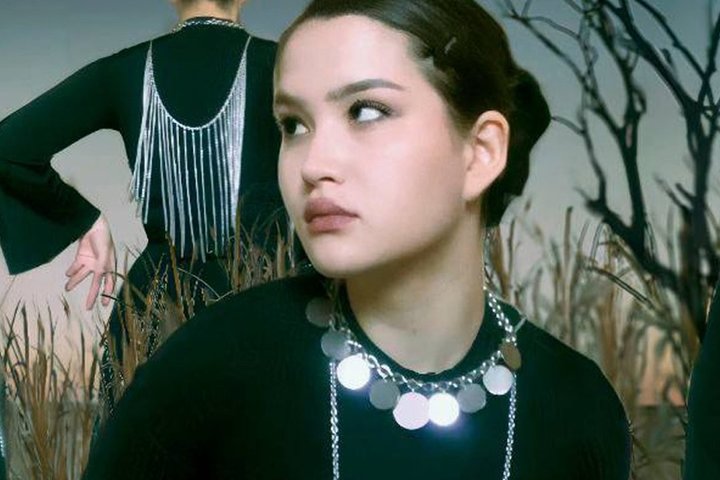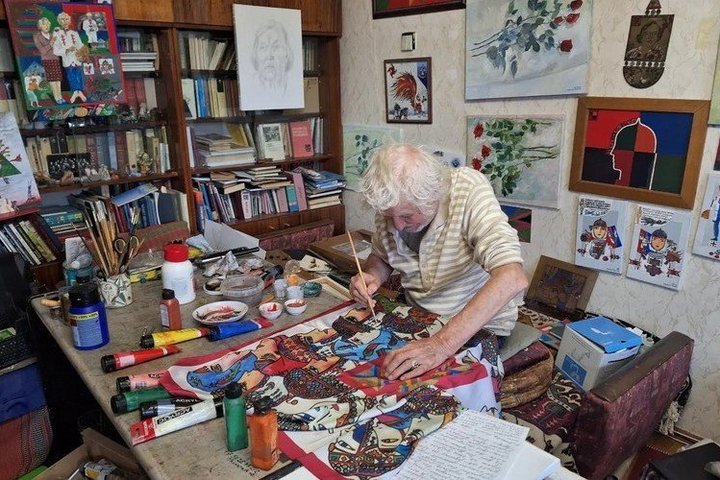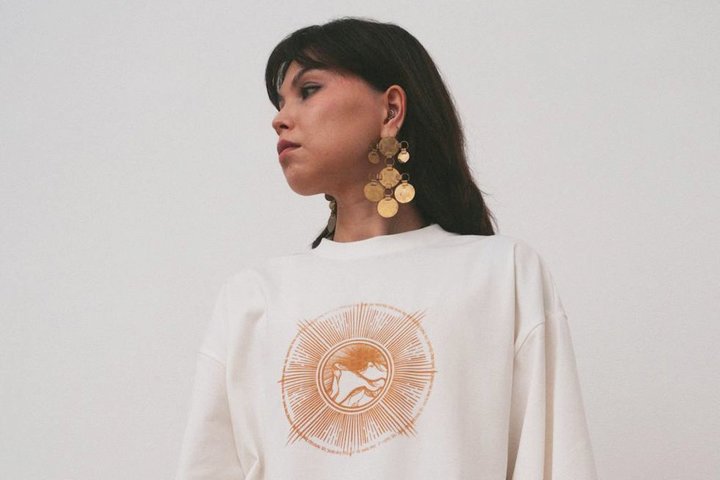‘There was no such number of brands and designers even a year ago’
Kazan is hosting a Chuvash design ethnomarket

A solo concert of the ethno-jazz group Shanu took place in Kazan on 14 September. Perhaps the most interesting Chuvash collective has settled in the capital of Tatarstan. This time, the musicians organised an ethnomarket of Chuvash designers at their performance. A year ago, such a movement did not exist, activists say, and now they can even arrange a trip to the neighbouring republic.
From beginners to classics

According to the artist, unlike Tatar modern music, the Chuvash practically do not have it: “Literally, there are us and a couple more bands. In this sense, I see our group as a kind of leader in this matter, we inspired them a little bit to these movements. Why not try to help? As a result, it turned into an ethnic party, because we are performing songs in Tatar, we have a guest artist — Ilgiz Shaikhraziev.” Kozhemanova noted that designers understood that they were not going to a big event like Sabantuy, but to a place with a likely traffic of 200-250 people.
“I told them: you may not have high sales, but there will be media coverage and some sales anyway. They know about it and agree to come on such terms.”
“So far, the fashion for ethnic jewellery is just emerging, even a year ago there were no such number of brands and designers," says blogger Ksenia Romanova. She lives in Kazan, her jewelry brand is called San Valli/For you.
Eight designers from Cheboksary and Kazan in total came to the ethno market: OMLA, ТӐNӐҪ, Viҫӗ hӗvel, Ӑsta, SavӑrPi, KASHKĂR, San valli, hotinovskaya, Praski Vitti. In particular, Ӑsta is a wooden decoration. And SavӑrPi — authentic outfits: khushpu — woman's headdresses, tukhya — girl's headdresses, masmak — woman's headbands.
On September 17, the exhibition of Praski Vitti, a classic of Chuvash painting, graphics, a master of the art of hot enamel, one of the symbols of modernism, opens at the Gallery of Modern Art. Love Lyrics of Great Poets is more than 90 sheets of graphics with stanzas from poems and songs from different countries, peoples and eras. On the opening day of the exhibition, the artist turns 88 years old. His grandson and daughter-in-law are due to present his prints on the market.
Classification from Yuma
“If we talk only about brands that manufacture products (graphic design in Chuvashia is a separate topic), then there are three different directions," artist Yuma says. “The first one is more understandable to most consumers. I call it 'Like Paha tӗrӗ' after the name of a large company. As a rule, in clothes these are very bright colours, an abundance of geometric patterns, and a large amount of ornamentation. It seems to me that this particular direction is influenced by the taste of the older generation and visually it refers to the materials of the 2000s.”

Yuma's brand is called ТӐNӐҪ (peace, tranquility), in addition to jewellery and accessories, she came up with an analogue of the Mafia called Vupӑr, adding a little Chuvash magic to it.
The second design option, according to Yuma, is based on photographs from ethnographic expeditions, shootage of Chuvashkino, antique jewellery.

“Basically, designers from this direction work more with jewellery and accessories (shawls, neck jewellery, hats), unlike the first one, where it is mostly clothes. Basically, these are more muted colours, minimalistic design. Personally, I combine this direction according to the principle of inspiration, it is visually from the lives of ordinary people who lived many years ago," says the artist.
The third direction is narrower, says Yuma, its authors turn to mythology and non-obvious cultural traditions: “Everything is developing by leaps and bounds, yesterday there were many people, but here...”
“Recently, ethnic themes in clothing and accessories have become very relevant, which cannot but please me as a master. More and more young people are beginning to get carried away with their history, the history of their region, and this interest creates new modern and stylised trends with Chuvash motifs, says Victoria Zakharova (Ӑsta).”
“Chuvash design is at the very early stage of its development," Lyudmila Semenova (OMLA) agrees. “A vivid interest in Chuvash awoke literally a year ago. I see a trend towards the revival of the past, the term 'Chuvash Renaissance' appeared, copying old samples with minor changes towards minimalism. This is a superficial search. The future belongs to meanings. Expressing them in new forms, building a new visual language for communication with the world — this is the task for the authors.”

“Modern young women are happy to wear Chuvash belts”
“I am pleased that more and more people are starting to think about their identity, turn to their roots, are interested in the history of their people, learn the language and broadcast it to the masses," says Ekaterina Volkova, KASHKӐR brand (Wolf). “All this has an impact on both artists and designers, especially the younger generation. I believe that they are to some extent becoming the engine of this process.”
“Now I notice a tendency to use patterns, this is the most obvious way to introduce ethnic elements into the design," says Volkova. “If you go deeper, you can see that modern young women are happy to wear Chuvash belts, use dresses or wardrobe items handed down to them from their grandmothers in their clothes, and decorate themselves with both traditional and modern interpretations of national jewellery.”
Reference
Shanu group is among the winners of the Second and Third All-Russian competition of youth jazz groups within the framework of the Moscow Jazz Festival, the First International competition-Festival of author's jazz Russian Jazz, the First All-Russian competition of jazz groups within the framework of the Angara Jazz Festival.